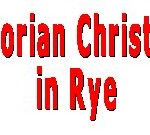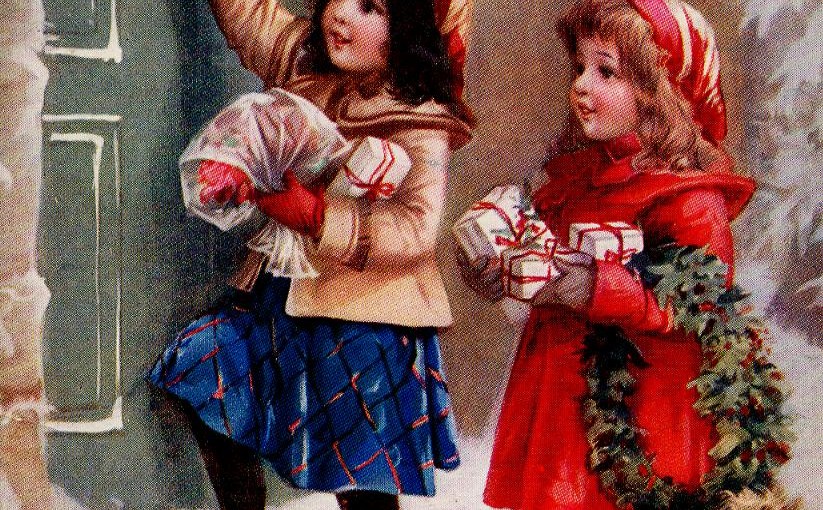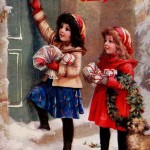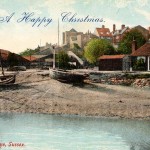What was a Dickens Christmas?

In modern times, with all the comforts that the post war world has ushered in, it is, perhaps, hard to imagine the days which Dickens has so vividly recorded for us when the workhouse and the beggar were part of the daily scene and the world was, as Disraeli remarked, for the few – the very few. Although with the advance of the welfare state the character of Christmas has changed and its true meaning has been lost amidst the onslaught of commercialism, it still remains a season of goodwill and a time when hearts are strangely touched by the magic of the occasion.
The changing face of Christmas has perhaps been most marked with the apparent change in weather. Traditionally, the season should be white but few Christmases in recent times have lived up to expectations. There can rarely have been a Christmas as that which Holloway, the 19th. Century historian, describes in Rye in 1836 a year before Victoria came to the Throne.
“A few days previously it snowed a little; on the night of the 24th. it snowed and continued to do so until 7am. of the 25th. It then cleared until about 2pm., when it came on again, and continued without intermission until 5 or 6am. of the 26th. when there was the deepest snow I ever beheld. The roads were completely impassable; the mail cart could proceed no further than Beckley, and was three hours getting there. There was no coach from London for seven days; no post for three. The streets of Rye were so full of snow that the inhabitants employed seventy men for five days to carry it away. It was calculated that ten to fifteen thousand sheep were lost in the snow, in the various marshes in the neighbourhood.”
Clarke in his “Guide and History of Rye” becomes almost lyrical in his description:-
“One sight above all was grand, and those who saw it can bear testimony to the same. From the foot of Rye Hill to the top, on the right, the snow had drifted amazingly high, nearly perpendicular, and in such folds, in such taste, and in such freaks as to out-vie all the ingenuity of man; in fact, the scene was sublime, far surpassing any chaste sculptile ever yet designed.”

In this same winter of 1836 the was an avalanche in Lewes and a man was killed, The only known fatality caused by a snow fall anywhere in Sussex or Kent. A pub stands on that same spot today, its name? Why, The Snowdrop of course.
Throughout Victoria’s reign winters were, on the whole, very seasonal. Most years there were substantial falls of snow.
Indeed, the white winters carried on throughout Edwardian, Georgian and into Elizabeth’s reign. The winter of 1946-47 was very hard and in 1962-63 the snow started on Boxing Day evening and the ground was covered in snow and ice for ten weeks. Many football leagues were not completed.
The last major snow fall was in 1980, when the streets of Rye were buried, along with the rest of Britain. Since that time winters appear to have got warmer and the last White Christmas in Rye occurred before many of our readers were born.
The Victorians would not recognise our winter. In those times for the wealthy there would always be ice on the rivers, canal and ponds thick enough to skate on and snow on Leasam to toboggan down. They did not always have to go to the Alps to ski either.
For the poor it was different. The winters were long and hard, at times Town Councillors would pitch in and the Soup Kitchen would be open to feed as many as 100 needy people on a daily basis. The ingredients for the vast pot in which the stew was cooked were supplied, in the main, by the generosity of Rye shop traders and local farmers. Volunteers cooked the broth in the building that once housed the pump that powered water up Conduit Hill and East Street to the water cistern in the Churchyard. This building later became conveniences until they were recently closed down by Rother District Council, and if reports are correct, have now been leased out.
What will this Christmas bring – snow, hail, rain, fog, thunder, heat wave? No one can foresee and, perhaps, that is a good thing for if Christmas is nothing else, it is a day for surprises for us all, not in the least in the matter of the weather.
Much of this information came from a piece written by Kenneth Clarke and first published in a 1965 issue of Rye’s Own. The Christmas postcards are from the Frank Palmer collection
“Rye’s Own” December 2009
All articles, photographs, films and drawings on this web site are World Copyright Protected. No reproduction for publication without prior arrangement. (Hard Copy Back Numbers Still Available) © World Copyright 2015 Cinque Ports Magazines Rye Ltd., Guinea Hall Lodge Sellindge TN25 6EG



